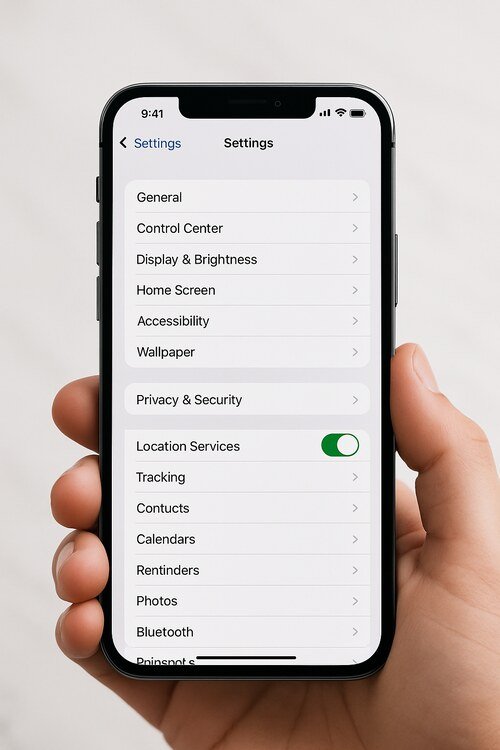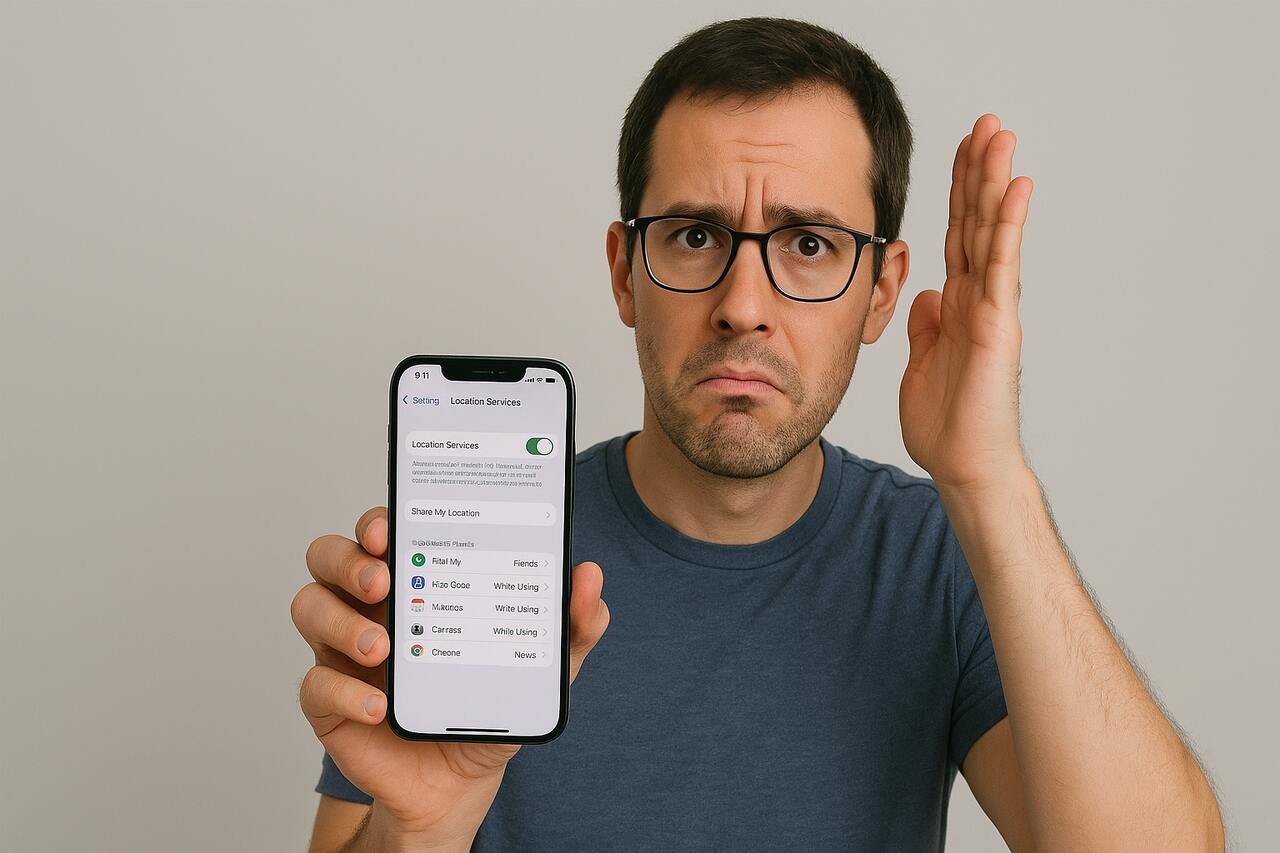iPhone users often encounter frustrating errors when attempting to share their location through Messages, Find My, or other iOS-integrated features. This problem affects not only convenience but also critical aspects like family safety, real-time coordination, and location-based automations. Several key entities—including iOS system services, privacy settings, iCloud status, app permissions, and even device network configurations—contribute to this issue. This comprehensive article explores the causes, implications, and troubleshooting methods related to location-sharing failures on iPhones, ensuring users can restore full functionality efficiently and securely.
What stops location sharing from working on an iPhone?
Location sharing typically fails due to a breakdown in system-level permissions, app configurations, or network communication protocols. Most commonly, disabled Location Services, revoked app permissions, misconfigured iCloud settings, or Airplane Mode interfere with real-time tracking and sharing.
iOS System Status and Device Conditions
Apple system-wide service outages or temporary iCloud syncing delays can disable location-sharing capabilities. System Maintenance or iCloud downtime, especially affecting the “Find My” network or Apple ID authentication, may block real-time location transmission.
Disabled Location Services
Location Services act as the foundational system layer for all location-based apps. When turned off either manually or due to privacy settings, all apps—including Messages and Find My—lose access to GPS or network-based geolocation.
Airplane Mode or No Signal
When Airplane Mode is enabled, or the device lacks Wi-Fi and Cellular access, the iPhone cannot obtain or transmit location. This issue arises frequently during travel or low-signal conditions.
How can I check if Location Services are enabled on my iPhone?

Users can check the Location Services status through Settings > Privacy & Security > Location Services. A disabled toggle here completely prevents any app or system feature from accessing geolocation.
Location Services Toggle
Ensure the Location Services switch is turned on. Without activation, no app or system function can determine or transmit your location.
Find My System Service
Within System Services (bottom of Location Services screen), confirm that Find My iPhone, Emergency Calls & SOS, and Share My Location are all enabled.
Region-Based Restrictions
Some countries enforce local restrictions on GPS or geolocation features. Apple’s compliance with regional data laws may affect availability.
Low Power Mode & Background App Refresh
If Low Power Mode is active, background location updates are limited. This affects apps like Find My or WhatsApp, reducing update frequency or preventing tracking altogether.
What app permissions do I need to share my location?
Each app must be granted explicit permission to access and share location, especially if it involves background updates. Permissions vary by app and must be manually configured.
Messages App
Navigate to Settings > Privacy & Security > Location Services > Messages, and select While Using the App or Always. Without this, you cannot share your live location via iMessage.
Find My App
Find My requires full system-level permissions. Go to Settings > [Your Name] > Find My > Share My Location, and confirm it’s enabled. Also, ensure Location Access is set to Always under app settings.
Third-Party Apps
Apps like WhatsApp, Facebook Messenger, or Snapchat must each have While Using or Always access to function properly for location sharing. Any other setting disables real-time transmission.
App-Level Restrictions
Screen Time or Content Restrictions may prevent individual apps from accessing location data. Verify under Settings > Screen Time > Content & Privacy Restrictions > Location Services.
How does AirDrop’s “Everyone” versus “Contacts Only” affect location sharing?
AirDrop doesn’t directly share location, but its visibility setting influences proximity-based features. “Contacts Only” uses iCloud verification, which may prevent visibility if Apple IDs don’t match.
Contacts Only
Limits visibility to people saved in your iCloud Contacts. If contact sync is misconfigured or outdated, sharing fails. Ensure Apple ID emails and numbers match in both users’ contacts.
Everyone
Allows any nearby iPhone to detect your device, useful in troubleshooting cases where contact-based verification fails. Temporarily switch to Everyone to bypass sync mismatches.
iCloud Account Status
Inactive or signed-out Apple ID sessions prevent AirDrop detection in Contacts Only mode. Verify login status under Settings > [Your Name].
AirDrop Blockers
Personal Hotspot or Do Not Disturb may interfere with AirDrop and, by extension, some visibility functions related to location-sharing protocols.
Why does “Share My Location” show “Not Available”?
“Not Available” signals a failure in Apple ID, iCloud syncing, or Find My network registration. This message appears within Messages, Find My, or Family Sharing contexts when the system cannot retrieve location data.
Signed-Out Apple ID
A missing or expired Apple ID session disables Find My and related features. Re-sign into iCloud to restore access.
Disabled “Share My Location”
Users may have disabled sharing under Settings > [Your Name] > Find My > Share My Location. Reactivating this option resolves the status.
Blocked by Recipient
If the recipient blocked your Apple ID or device, location requests will fail. No location will be delivered or shown.
Location Restrictions
If parental controls restrict location sharing or if Screen Time disables it, the message will remain stuck on “Not Available.”
When is my iPhone’s network connectivity preventing location sharing?
Network connectivity is critical for syncing and transmitting real-time location updates. An iPhone offline, in low-signal mode, or with limited internet access cannot transmit accurate GPS coordinates.
| Connectivity Factor | Impact on Location Sharing |
| Airplane Mode | Disables all network & location transmission |
| No Wi-Fi or Cellular Signal | Prevents Find My or iMessage location sync |
| VPN Interference | May block geolocation or spoof region |
| iCloud Sync Issues | Affects Apple ID-based contact location sharing |
| Location via Bluetooth Only | Insufficient for full location sharing without GPS or internet support |
Poor or absent network connectivity disrupts both location determination and transmission. Real-time sharing functions depend on GPS triangulation paired with active internet or cellular sync to relay data through iCloud or third-party apps.
Can software updates or bugs cause location-sharing failures?
Yes. Outdated iOS versions, corrupted system files, or known software bugs can prevent location features from working correctly. Apple frequently releases patches for GPS, Wi-Fi, and Find My issues.
iOS Version Compatibility
Older iOS versions may not support newer location-sharing protocols, especially for iCloud Family Sharing or background updates. Ensure compatibility by upgrading via Settings > General > Software Update.
iOS Bugs
Bugs affecting “Find My,” “Location Services,” or “Messages” are occasionally reported. Visiting Apple’s System Status Page identifies current known issues or outages.
iOS Beta Users
Beta firmware versions often contain unstable location APIs. Switching back to the stable public release restores proper location syncing.
System Cache Corruption
Corrupt cache files or failed over-the-air updates may break location services. Reinstalling iOS via iTunes or Finder can eliminate persistent software issues.
How do privacy or parental controls affect sharing my iPhone location?
Privacy restrictions—including those applied via Screen Time or Content & Privacy settings—can prevent apps and system services from accessing or sharing location data.
Screen Time Restrictions
Under Settings > Screen Time > Content & Privacy Restrictions > Location Services, if access is set to Don’t Allow Changes, users can’t modify or enable location sharing.
iCloud Account Limits
Family organizers can disable sharing from children’s devices. This restricts access to Find My and hides Share My Location settings entirely.
App-Specific Controls
Even if Location Services are active, individual apps may be blocked. Each must be configured for Always or While Using to function properly.
Sensitive Area Restrictions
In certain cases, government-mandated restrictions may automatically disable or limit GPS functionality for national security zones or conflict regions.
What steps fix “unable to share location” on iPhone?
Users can follow specific steps to restore location sharing. These steps fix permissions, settings, and connectivity problems.
How to reset Location Services?
Go to Settings > General > Transfer or Reset iPhone > Reset > Reset Location & Privacy. This restores all apps to their default permissions, resolving corrupted or revoked access.
How to reset network settings?
Navigate to Settings > General > Transfer or Reset iPhone > Reset > Reset Network Settings. This clears saved Wi-Fi networks, VPN settings, and cellular configurations to fix connectivity-based location issues.
How to toggle “Share My Location” in Find My settings?
Open Settings > [Your Name] > Find My > Share My Location and toggle it off, then on again. This forces a refresh of iCloud’s permission sync and fixes minor glitches.
How to update iOS and check for system bugs?
Go to Settings > General > Software Update, download and install the latest iOS version. For ongoing issues, visit Apple’s System Status Page to check for outages or service disruptions.
Conclusion
Location-sharing failures on an iPhone arise from a complex interplay between system settings, app permissions, network access, and user configurations. By checking Location Services, enabling app-level permissions, managing parental controls, and updating iOS, users can typically resolve most errors. Awareness of these entities—and how they interrelate—restores critical functionality for safety, coordination, and communication across Apple’s ecosystem.
FAQs
Q: Why is “Share My Location” grayed out on my iPhone?
A: “Share My Location” appears grayed out when iCloud or Find My is disabled, Screen Time restricts access, or the Apple ID session is inactive.
Q: How do I enable Location Services on iPhone?
A: Go to Settings > Privacy & Security > Location Services, and switch the toggle on. Also enable System Services like “Find My iPhone.”
Q: Why can’t I share my location via Messages but can via Find My?
A: Messages app may lack the correct location permission. Set it to While Using the App or Always under Location Services.
Q: Does turning on Airplane Mode prevent sharing location?
A: Yes. Airplane Mode disables all radios—including GPS, Cellular, and Wi-Fi—preventing the device from sharing or receiving any location data.
Q: Will parental controls block location sharing?
A: Yes. Screen Time and Family Sharing can restrict location access, especially for children’s devices or limited-user Apple IDs.
Q: Why does location sharing work for some contacts but not others?
A: Only contacts using Apple devices with iCloud accounts synced to yours can receive location updates. Mismatched Apple IDs often prevent successful sharing.
Q: How do I reset all location & privacy settings?
A: Navigate to Settings > General > Transfer or Reset iPhone > Reset > Reset Location & Privacy. This restores default permissions across all apps.
Q: What if my iCloud or Find My account isn’t syncing location?
A: Sign out and back into iCloud, verify that Find My iPhone and Share My Location are enabled, and check for system service outages.
Read Also: Top 10 Developers Who Make iPhone Popular


